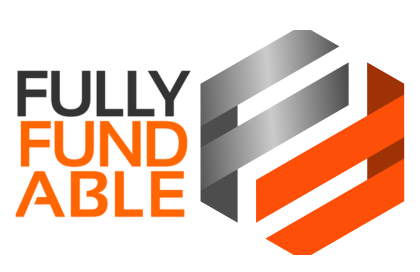“How Much Cash Should Your Growing Business Keep on Hand?”
The 3-bucket strategy for fast-growing entrepreneurial businesses.
ASK THE CAPITAL ADVISOR / AGENT / ADVOCATE / ALLOCATOR:
Q:💰 How Much Cash Should Your Growing Business Keep on Hand?
A: Fast-growing, founder-led companies often need a bigger runway than slow-and-steady peers — but only up to the point where each extra idle dollar could earn more by going back to work in the business.
The Three Liquidity Buckets <<
Operating Bucket – 3 months of fixed expenses
Covers payroll, rent, and must-pay bills. This is the bare minimum cushion that keeps the lights on during normal hiccups.
Reserve Bucket – another 6 to 9 months
Sits in a high-yield money-market or T-bill ladder. Gives breathing room for bigger surprises, inventory spikes, or a clutch new hire.
Opportunity / “Private Treasury” Bucket – storehouse for unlimited surplus cash
Dry powder for working capital back into primary business, business and/or real estate acquisitions, distressed-asset buys, or price-dip inventory. Hold it in collateral-friendly assets so it can be pledged for even larger premium loans.
Why More Cash Helps a Growth Company <<
Volatility cover: Rapid hiring and marketing sprints chew through cash fast.
Deal speed: Cash lets you grab bargains while competitors scramble for financing.
Better terms: Healthy balances impress lenders and suppliers.
Peace-of-Mind Dividend: Knowing you can survive storms for a year lets you think clearly, negotiate harder, and swing for bigger wins. That mental bandwidth often outperforms the extra 4-5 % you might earn by redeploying every last dollar back into business operations.
When the Pile Becomes a Parking Brake <<
You’re earning less on idle cash than your business’s average return on capital.
Large balances hide sloppy margins or delayed tough decisions.
Inflation quietly erodes purchasing power.
Investors or bankers start asking: “What’s the plan for all that cash?”
Surplus vs. “Just Enough” in an Uncertain Economy <<
Having 6-12 months on hand
✅ Ride out black-swans without panic loans
✅ Pounce on discounted assets or talent
✅ Sleep at night, strategize by day
⛔ Higher opportunity cost if you never deploy it
⛔ Risk of complacency and “lazy money”
Keeping only 3 months
✅ Forces capital discipline—every dollar must earn its keep
✅ Minimal inflation drag
⛔ One nasty surprise can put business into tailspin and force expensive bridge financing
⛔ Misses fast-moving opportunities when cash really is king
Bottom Line <<
For most < $10M annual revenue businesses aiming for serious growth, a 6-9-month cushion (above the 3 months of operating cash) hits the sweet spot.
Remember: the "Peace-and-Clarity Dividend" of a healthy cash buffer often beats chasing an extra point or two of yield. Wise founders protect tomorrow and prime the Financial Time Machine (leveraging debt) to pull those future profits into today’s bank account.
🛡️ Where Does Extra Cash Beyond 12 Months Go?
Introducing your Private Treasury, aka your FullyTreasured Storehouse.
This Pillar 3 of The Infinite Funding Framework is ideally built upon a properly structured "Infinite Banking” (dividend-paying whole-life insurance policy) account.
Done right, it can neutralize the opportunity cost of idle cash because the same dollars can work in two places at once (double-dipping):
Inside the policy — compounding tax-advantaged cash value and potential dividends (historically 5-6 % gross at top mutual carriers, though never guaranteed).
Outside the policy — via a policy loan you control, redeployed into your business, real estate, the market, or whatever opportunity rings the bell.
Think of it as a financial echo: the cash value keeps quietly growing and compounding uninterrupted even while those dollars are off chasing ROI elsewhere.
Why Entrepreneurs Love Infinite Banking / Private Treasury <<
Double-dip effect – earn policy growth and outside returns.
Speed & control – request a policy loan, often funded in days, no bank committee.
Asset protection – in many states cash value is shielded from creditors (check local law).
Legacy & liquidity – permanent death benefit plus living capital you can tap on demand.
Psychological edge – knowing the war-chest is compounding tax-advantaged and still deployable delivers a calm that frees brain-space for bold moves.
Important fine print (read this twice) <<
Policy loans aren’t free. They accrue simple interest (frequently 4-6 %). Your net “spread” is policy growth minus loan interest.
Dividends can change. Past performance ≠ future results. Mutually-owned carriers have stellar records, but nothing is guaranteed.
Overfund carefully. Stuff too much premium in too fast and the policy can trigger MEC status, losing its tax-favored loan treatment. A savvy, licensed agent will use PUAs and term blends to keep it compliant.
Patience required. High-cash-value designs still have early-year insurance costs; most owners see meaningful positive net growth after a few years, not weeks.
Not one-size-fits-all. Suitability depends on age, health, cash-flow consistency, and long-term commitment. Always consult a properly licensed insurance professional and, if needed, your tax advisor.
Putting it all together «
Fill the 3-month Operating Bucket.
Top the Reserve Bucket with another 6-9 months.
Redirect the surplus into your FullyTreasured Storehouse, then borrow against it whenever high-return opportunities appear — effectively keeping liquidity, growth, and peace-of-mind in the same move.
That way, every extra dollar becomes both a safety net and a springboard, helping your Financial Time Machine keep pulling tomorrow’s wins into today’s bank account without leaving cash asleep at the wheel.
Hope at least most of that made sense to you! Let me know if you'd like to discuss putting something like this in motion for your business, your personal lifestyle, and your legacy.
— Dan Kalis, founder & Chief Capital Advisor, FullyFundable




